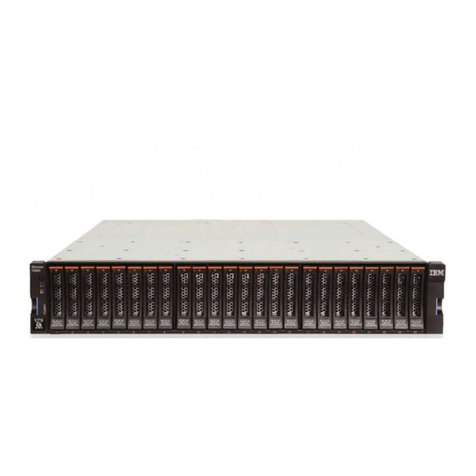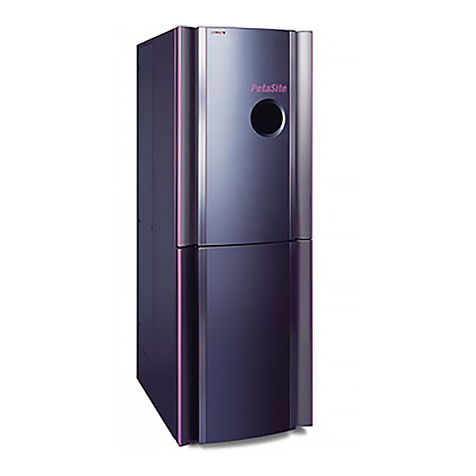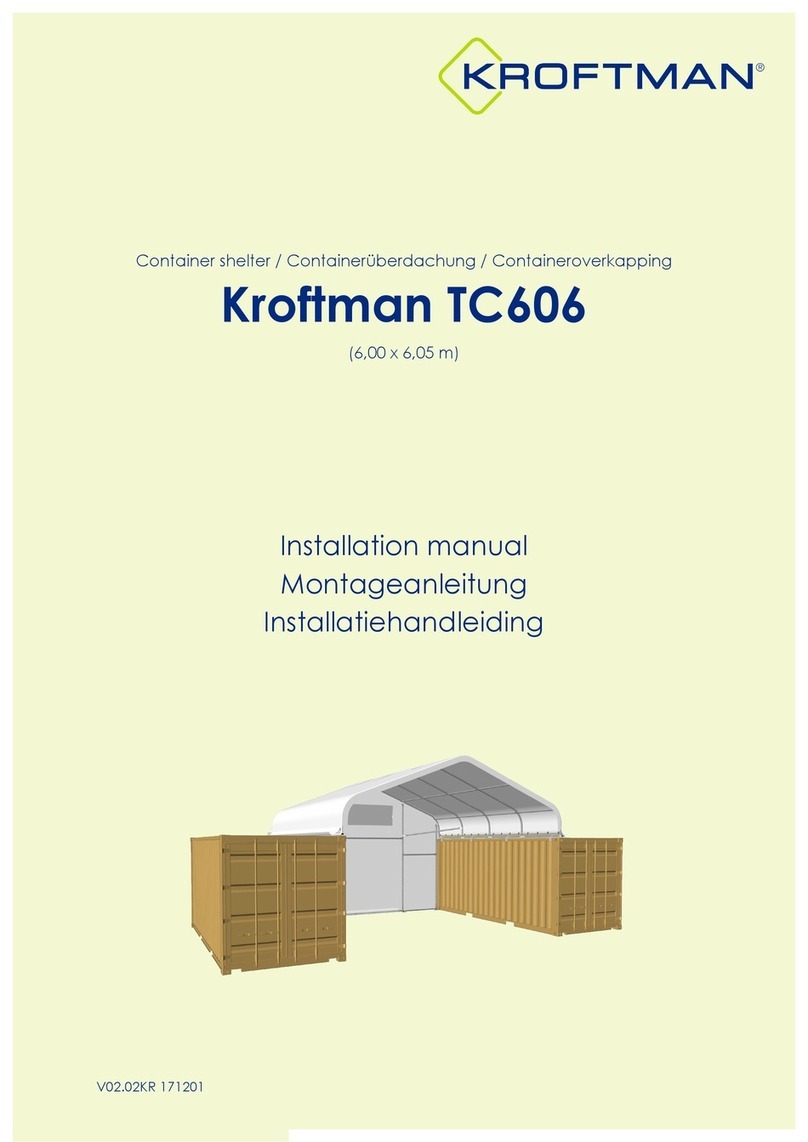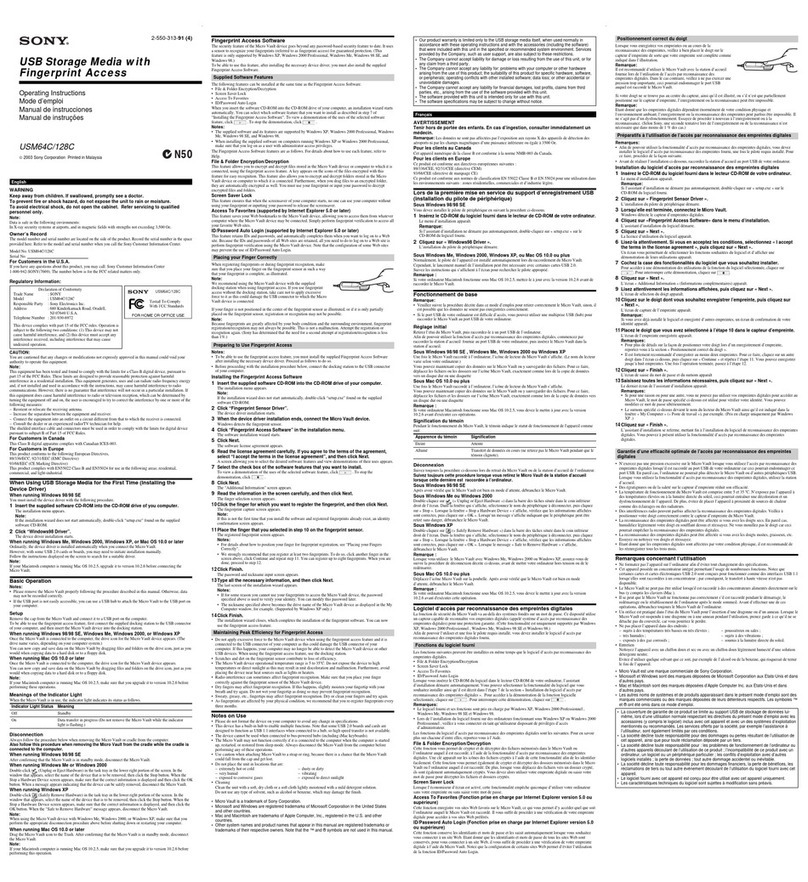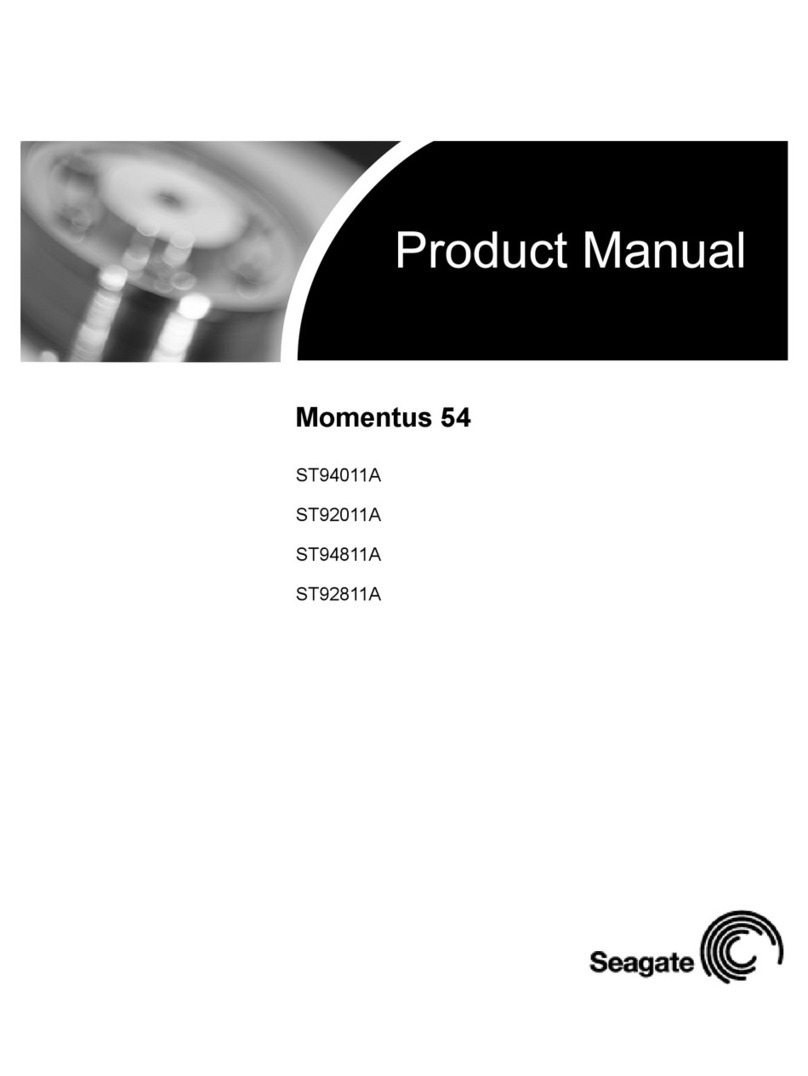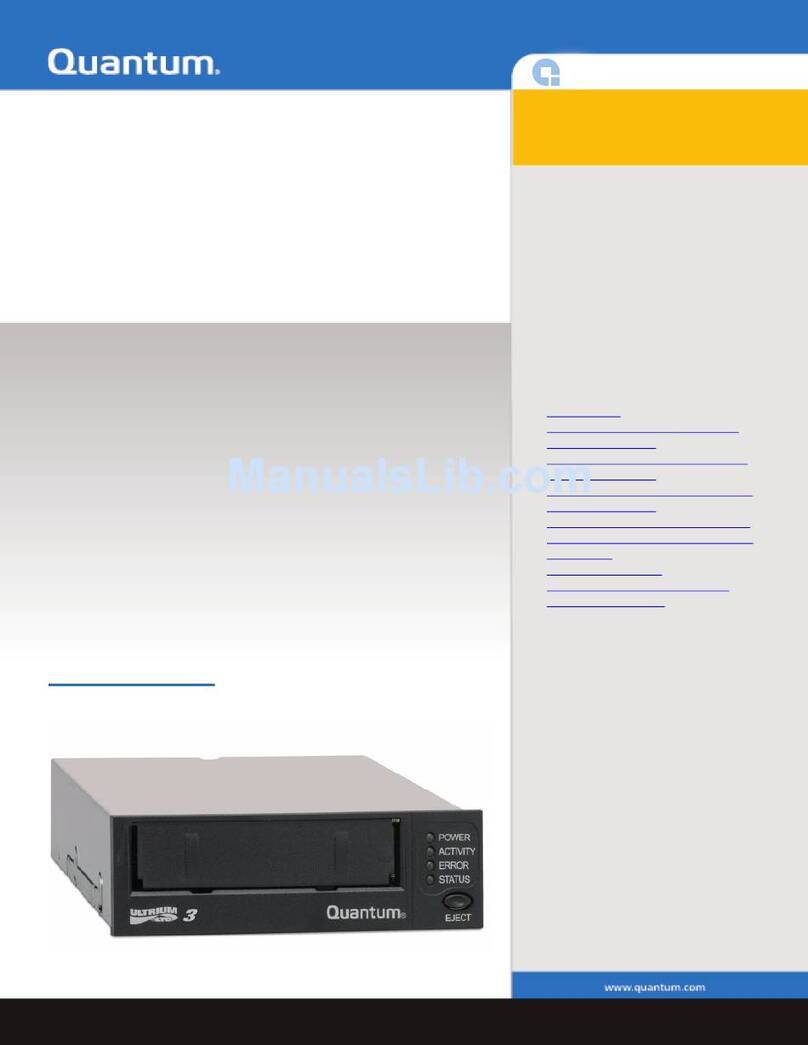TRI-DATA CartriFile 40 User manual

Instruction
Manual
TR
I
DA
TA
800 Maude
Avenue/Mountain
View/CA
94040
-
,I,
Phone (415) 969-3700/TWX 910-379-6978

CartriFile
40
Section
II
III
CONTENTS
INTERFACE
.....
.
DESCRIPTION . . . . .
INTRODUCTION
EQUIPMENT DESCRIPTION
Tape Drive Assembly
Electronics Assembly
Power Supply .
Front
Panel. .
Tape Cartridges
SPECIFICATIONS
Physical Characteristics.
Dimensions and Weight.
Environment . . . .
Title
Input
Power Requirements
Input/Output
and Power Connectors
Operational Characteristics
Input/Output
Signal Levels
Tape Motion . . .
Recording Technique
Record Format
Data
Transfer.
. .
Inter-Record Gaps .
Beginning-of-Tape and End-of-Tape
Data Transfer Rate . . . .
Data Transfer Time Per Record
Load-Point Search Time
Data Storage Capacity .
1000 Series Tape Cartridges
INSTALLATION. .
GENERAL
...
INSTALLATION.
Table-Top Placement
Rack Mounting
Power Connection
Grounding.
. .
Remote Load-Point Search Control.
Interface Connections
OPERATION
.....
INTRODUCTION
CONTROLS AND INDICATORS
Application
of
Power
Cartridge Insertion and Removal.
Remote Load-Point Search Control.
AUTOMATIC OPERATIONS.
Write Sequence and Timing
Read Sequence and Timing
Read Timing Variations. .
Load-Point Search and Status
Bits-Per-Word Format Selection.
1
Page
1-1
1-1
1-1
1-1
1-1
1-2
1-2
1-2
1-2
1-2
1-2
1-2
1-2
1-2
1-4
1-4
1-4
1-4
1-4
1-4
1-4
1-4
1-4
1-5
1-5
1-5
1-5
2-1
2-1
2-1
2-1
2-1
2-1
2-2
2-2
2-2
3-1
3-1
3-1
3-1
3-1
3-1
3-1
3-1
3-3
3-4
3-4
3-4
iii

TRI-DATA
Section
IV
v
iv
CONTENTS (Continued)
THEORY OF OPERATION .
GENERAL
.....
.
RECORDING TECHNIQUE
TAPE TRANSPORT. .
CIRCUIT OPERATION
Power Supplies . .
Title
Power Supply 10947-1 .
Regulator Board 10790-0 .
Motion Control . . . . .
Load-Point
Sensing.
. .
Pinchroller Actuator Driver
Load-Point Search Operation.
Write/Read Start Operations .
Write/Read Stop Operations .
Write Electronics. . . . . .
Timing & Data Board 10748-0
Write Drivers . .
Read
Electronics.
. . . . .
Read Preamplifiers . . . .
Read Amplifier Board 10746-1
Timing & Data Board 10786-0
Interface Electronics.
INTRODUCTION
DAILY MAINTENANCE
YEARLY MAINTENANCE
Capstan Motor Lubrication
Drive Belt Replacement.
Lamp
Replacement.
. .
Actuator Adjustment . .
Electronics Checkout and
Adjustment.
Regulator Board
10790-0.
.
Read Amplifier Board 10746-1
Photosense Board 10972-0
3-
YEAR MAINTENANCE
Capstan Motor
Replacement.
.
Capstan Assembly Replacement .
Cooling Fan
Replacement.
. .
MAGNETIC HEAD MAINTENANCE
Head Alignment . .
Head
Wear
....
Head Replacement .
TROUBLESHOOTING.
"
CartriFile 40
Page.
4-1
4-1
4-1
4-2
4-3
4-3
4-3
4~3
4-4
4-4
4-4
4-4
4-5
4-6
4-6
4-6
4-8
4
...
8
4-8
4-8
4-11
4-11
5-1
5-2
5-2
5-2
5-2
5-2
5-2
5-3
5-4
5-4
5-4
5-5
5-5
5-5
5-5
5-6
5-6
5-8
5-9
5-9

CartriFile
40
Table
1-1
1-2
3-1
3-2
4-1
4-2
5-1
5-2
Figure
1-1
3-1
3-2
4-1
4-2
4-3
4-4
4-5
4-6
4-10
5-1
5-2
5-3
5-4
5-5
5-6
5-7
5-8
5-9
5-10
5-11
5-12
5-13
5-14
5-15
5-16
TABLES
Input Power . . .
Data Transfer Rates .
Write Clock Timing .
Read Clock Timing .
CartriFile 40 Mnemonics
Time Delay Adjustments
Maintenance Schedule
Problem Analysis. . .
Title
ILLUSTRATIONS
Title
Mounting Dimensions and Clearances
Write Timing Relationships
Read Timing Relationships
Write/Read Waveforms of 16-Bit Data Word 1010100110010101.
Tape Transport Mechanism
Photosense Assembly . . .
Write Operation Block Diagram
Write Timing Diagram . . .
Read Operation Block Diagram
Read Timing Diagram . .
Actuator Adjustment Points .
Read Amplifier
TP6.
. . .
Location of Electronics Assemblies, Connectors, and Terminals
Power Supply Terminals . . . . .
Head Alignment Checkout Waveforms.
Azimuth
Alignment.
.
Vertical Alignment . . . .
Head Adjustment Screws . .
Read Amplifier Board 10746-1
Timing & Data Board 10786-0
Motion Control 1 Board Assembly 10788-0
Regulator Board
10790-0.
. . .
Motion Control 2 Board
10968-0
.
Photosense & Lamp Board
10972-0
Actuator Driver Board
10974-0
.
Transport Board
10976-0.
. . .
TRI-DATA
Page
1-2
1-5
3-2
3-4
4-3
4-5
5-1
5-9
Page
1-3
3-2
3-3
4-1
4-2
4-4
4-6
4-7
4-9
4-10
5-2
5-3
5-3
5-6
5-7
5-8
5-8
5-8
5-11
5-12
5-13
5-14
5-15
5-16
5-17
5-18
v


TRJ-OATA
SECTION I
DESCRIPTION
INTRODUCTION
The CartriFile® 40 cartridge-loaded digital magnetic tape unit
is
used with small digital
computers, data terminals, and off-line data entry and readout stations. The
unit
contains
a four-cartridge tape transport, all necessary read/write electronics, and a power supply. Tri-Data 1000 series single-tape
cartridges are used
as
the recording medium. Each cartridge contains an endless-loop magnetic tape, with the photoreflective
load-point marker serving
to
indicate both the beginning and the end of the tape loop. The CartriFile 40 tape unit can
be loaded with one, two, three,
or
four cartridges in any slot
or
combination
of
slots.
CartriFile
40
tape units are available with interface electronics for
all
widely used minicomputers
or
with standard
interfacing for those who wish to build their own special interfaces. Details
of
the interface equipment supplied with
this CartriFile 40 tape unit are presented in the separate INTERFACE section in the front
of
this manual.
EQUIPM
ENT
The CartriFile 40 magnetic tape unit
is
supplied
in
a cabinet suitable for desk
or
table-top
DESCRIPTION
mounting. Four single-cartridges, an a-c power cable, and one copy
of
the CartriFile
Instruction Manual are supplied with each unit. In addition, either the standard interface equipment
or
interfacing for a
specific type of computer
is
furnished,
as
requested. Brackets for mounting the cabinet into a 19-inch equipment rack
are also supplied.
The major assemblies
of
the CartriFile 40 tape unit are the tape transport, the electronics, the power supply, the front
panel, and the cartridges. Descriptions
of
these assemblies are given below. Details
of
operation are given in Section III.
Tape Drive Assembly
The tape drive assembly contains the electromechanical
components for driving the tape, the read/write heads, the
load point sensors and buffers, the write driver amplifiers,
the read amplifiers, and the sensors for detecting proper
cartridge insertion and the write enabled status
of
the
individual tapes. The tape drive assembly
is
mounted
within the cabinet on a hinge
so
that
it can be swung
outward for servicing.
Tape drive occurs in a "forward only" direction and
is
accomplished by a constantly rotating capstan and a
pinchroller actuator. The actuator engages a pinchroller
. (located within the cartridge), clamping the tape against
the capstan. The tape
is
started, driven, and stopped by
energizing and de-energizing the actuator for
that
particular
tape. The four tapes are actuated independently.
The capstan drive motor operates from either
GO-Hz
or
50-Hz power; however, the pulley on the drive shaft
is
equipped with two drive belt grooves
to
accommodate
differences in operating speeds. Units sold domestically
are furnished with the drive belt positioned in the "GO-Hz"
groove; for 50-Hz operation, the pulley must
be
reversed
and the belt engaged with the
"50-Hz"
groove.
®CartriFile
is a
registered
trademark
of
Tri-Data
Corporation.
The front
of
the transport serves
as
a
mount
for
five
lamps and a power switch. The upper and lower lamps
light when the associated tape
is
in
motion. The center
lamp lights when power
is
supplied
to
the tape unit.The
lamps illuminate plastic buttons in the front panel. The
power switch
is
located below the cartridge slots;
it
is
provided
as
a servicing aid and
is
normally left in the
"on"
position.
Electronics Assembly
The electronics assembly card rack contains six printed
circuit boards and an extender board. The printed circuit
boards contain the read and write timing and signal
amplification circuits, data registers, and power regulation
circuits. The boards can be removed from the front of
the cabinet, and the extender board
is
provided
to
bring
any
of
the boards forward for servicing while the unit
is
operating.
Input/output
signals for the tape unit are run through a
single cable from the card cage
to
connector J3, which
is
normally mounted on the rear panel. An alternate
location for J3, toward the front
of
the cabinet, permits
.the installation of an interface circuit board within
the cabinet.
1-1

TRf-OATA
Power Supply
The power supply provides the power requirements
of
the tape unit from an a-c line source and also includes
a small fan for cooling the unit. The power supply
is
an
integral
part
of
the rear panel assembly, which
is
hinged
to
the cabinet frame and swings outward for access
to
power supply components.
The power supply operates at a line frequency
of
either 60
Hz
or 50 Hz. The input voltage can be either
105-125
v
ac
or 210-250 v ac, depending upon the setting
of
a
two-position slide switch mounted on the rear panel.
The primary power input connector, fuseholder, and fuse
are also located on the rear panel.
Connector
J2
on the rear panel
is
provided for optional
remote load-point search control.
By
grounding the
appropriate line through J2, a tape can be brought to
load
point
without a programmed instruction or other
command through the controller.
Front Panel
The front panel
is
attached
to
the CartriFile tape unit
by a stud and catch on each end. To remove the panel,
grasp the panel near the cartridge slot area and pull
outward. The front panel contains no operating controls.
Five plastic buttons to the right
of
the cartridge slots
are illuminated by transport-mounted lamps
to
indicate
"tape
in
motion"
and
"power-on".
Tape Cartridges
Each
1000
series cartridge contains a single endless-loop
tape. A photoreflective Load Point marker on the tape
determines the "beginning" and
"end"
of the tape. Write
lockout
is
provided on the cartridge by a Protect/Enable
switch.
An
integral slide cover encloses the tape completely
when the cartridge
is
not
in use. The front
of
each
cartridge has a surface suitable for writing file identification
information.
SPECI
FICA
TlONS
The specifications which follow include physical dimensions, environmental considerations,
and various operating and timing characteristics
of
the CartriFile
40
tape unit. Specifications
for the Tri-Data tape cartridges are also given. For specifications for the interface equipment supplied with this tape
unit, refer
to
the separate INTERFACE section at the front
of
this manual.
Physical Characteristics
Specifications for CartriFile
40
dimensions, environmental
conditions, power requirements, and connectors are given
below.
DIMENSIONS AND WEIGHT
External dimensions, mounting dimensions, and clearances
for the CartriFile
40
tape
unit
are shown in Figure
1-1.
The tape unit weighs approximately 34 pounds.
ENVIRONMENT
The CartriFile
40
tape unit will operate
in
an ambient
temperature range
of
+40°F to +110°F and
at
any relative
humidity between
20%
and 90% without condensation.
The
unit
will also operate
at
any altitude between sea
level and 10,000 feet.
INPUT
POWER
REQUIREMENTS
Maximum input power of 180 watts
is
required in any
of
four voltage frequency combinations. The CartriFile 40
tape unit
will
meet
all
specifications when the input
power
is
within the ranges given in Table
1-1.
1-2
Table
1-1.
Input
Power
VOLTAGE FREQUENCY
NOMINAL RANGE RANGE
115 vac, 60
Hz
105
vac
to 125
vac
57
Hz
to 63
Hz
115 vac, 50
Hz
105
vac
to
125
vac
47
Hz
to 53
Hz
230 vac, 60
Hz
210
vac
to
250
vac
57
Hz
to
63
Hz
230 vac, 50
Hz
210
vac
to
250
vac
47
Hz
to 53
Hz
INPUT/OUTPUT AND
POWER
CONNECTORS
Connector J3, for data and control inputs and outputs,
is
located
at
the left rear
of
the CartriFile
40
tape unit.
Detailed information on this connector and
the
signals
carried on the connector pins
is
presented in the separate
INTERF
ACE
section.
The power connector, J1,
is
recessed into the rear panel.
A power cord which mates with J1
is
supplied; its
opposite end
is
fitted with a standard male U-ground plug.

I-'
I
~
~
~
~
I-'
I
I-'
~
o
s::
:::l
0;
::s
!IO.
t:1
s"
(!)
::s
en
g"
en
§
c..
9
(!)
i
(!)
en
,------1
--,
1
1 I
I 1 1-3/4 1I
'I
r I
l-------~-------~
-------
--
--...,
1 1
1
1
\
\
\
\\\ \
9_
112
TAPE TRANSPORT
SWING-OUT CLEARANCE
\ \
"-
"-
"-
"
"-
"-
'-
'-
~-____t-I--
- - - - - --,
1 1
1 1
I 1000 SERIES :
I CARTRIDGE
I 1
I 1
I
I
1
L_--,
L-_--+-L
______
..J
1
1
1
1
----.
I
1
1
1
1
I
1
:----
TAPE TRANSPORT 1
r------.....J
1
1
1
I
_.-1
I 1
1 1
1 I
: I
I
I
I
I
I
I
POWER I
SUPPLY I
r>--.....
A-C
POWER
CABLE
:.------:3:--
I.~
------------------l
I I I
I
I
I
I
1
I
I
I
1
1
1
CLEARANCE
FOR
ELECTRONICS CARD
ON
EXTENDER BOARD
I 1
I ELECTRONICS 1
I CARD CAGE 1
I I
1
I 1 I 1
---
L
_________
_ L
_________________
~
L
___
~
1I\
110
CONNE~TOR
I
I
I ;
--------~--------,
C I'
Ii
r::=::::s
\
~
)
t~13/41-
SPECIAL
INTERFACE CARD
(NORMAL POSITION)
OPTIONAL
ADDITIONAL
CARD POSITIONS
r--
-
-----
---
I
I
I
I
I
I
I
I
CARTRIDGE
INSERTIONIREMOVAL
CLEARANCE
L
_______
,
__
_
....
1-3/4
...
)
RACK MOUNT
BRACKET
13-1/2
.1__
2-3/4_
-------1
I
1--
I
I I
I
~RACKMOUNT
i BRACKET
I
I
I
L_
-L
318
REMOVE
FEET
FOR
RACK MOUNTING
I
1
1
17
-
----
----------------,
13_1/
1
POWER SUPPLY
SWING-OUT CLEARANCE
/
./
./
/'
/'
/'
/'
/
/
/
/
/
/
/
/
/
/
/
!
/
/, ,
/
I
I
/
/
,
I
I
I
1131

Operational Characteristics
The following paragraphs describe the operational
characteristics
of
the CartriFile
40
tape unit: signal
levels, tape motion, data transfer rate and storage capacity,
and so forth.
INPUT/OUTPUT SIGNAL LEVELS
CartriFile
40
input
and output circuitry uses
Transistor-Transistor Logic (TTL), +2.5 to +5.0 v for
High
and
-0.5
to
+0.5 v for Low. Sink current requirements
for a Low input
will
not exceed 2 rna. The outputs can
supply 1 rna
at
minimum
High
voltage and can sink
10
ma
at
maximum Low voltage.
TAPE MOTION
The tape
is
driven at 10 inches per second in a
"forward"
direction in the three operating modes: Write Tape, Read
Tape, and Load-Point Search. "Reverse" or "backspace"
tape movement
is
not
possible.
RECORDING TECHNIQUE
The CartriFile
40
tape unit employs a bit-serial
phase-encoded, two-track recording technique with
record-error detection.
RECORD FORMAT
Records of sequential data words are written on the tape,
with the records separated by
gaps.
Each record may
contain any number of words,
as
determined by the
external control unit during writing.
The data words may contain 8, 12, or 16 bits. Either
8 or
12
bits-per-word formats may
be
program-selected
by the external control unit
or
fixed by wiring the select
input
to
ground
at
the interface. For 16 bpw,
no
ground
connection
is
required.
DATA TRANSFER
The data words are transferred in and out bit-parallel.
The data are written on the tapes bit-serial, with internal
circuitry making the parallel-to-serial conversion during
Writing and the serial-to-parallel conversion during Reading.
The using external control unit (e.g., digital computer)
has wide latitude in servicing the data transfers during
both
Writing and Reading. During Writing, a Write Data
Clock pulse
output
occurs
at
a fixed rate; the using control
unit has the major portion
of
the period between each
Data Clock
to
input
the data word with a Write Data
Transfer
input
pulse. During Reading, the data outputs
may be sampled by the external control unit at any time
1-4
during the major portion
of
the period between Read
Clock pulse outputs. Precise timing for the data transfers
is
given in Section III, OPERATION.
INTER-RECORD
GAPS
In Writing each record, a Write Start delay
of
16 msec
and a Write Stop delay
of
8 msec accommodate the
start-
and stop-tape motion transients and provide the
time for writing a 0.16-inch (maximum length) inter-record
gap. Internal circuitry times both delays and controls the
tape motion and gap writing.
After reading each record, internal circuitry recognizes
the inter-record
gap
remaining
to
accommodate the start
transient prior to reading the next record. The Read
Start and Read Stop delays are 9.5 msec and 4.75 msec,
respectively.
BEGINNING-OF-TAPE AND END-OF-TAPE
A 3-inch long photoreflective Load Point marker affixed
to the continuous-loop tape marks both the beginning
and the end
of
the tape. Each tape passes a photosensor
before reaching the magnetic head; the 1.45-inch separation
between the photosensorand head provides for the following
beginning-of-tape timing and end-of-tape warning.
On
writing the first record on a tape, a Write Start delay
of 375 msec
is
initiated after the Load Point marker passes
the photosensor
to
assure adequate beginning-of-tape
gap. The resulting total Write Start or Read Start delay
for the first record
is
therefore between 375 and 675
msec, depending upon the exact Load Point position
of
the tape when the Start Command
input
occurs.
An
end-of-tape warning
is
provided during Writing when
the leading edge of-the marker passes under the photosensor
and causes the Load Point status line for the tape to
go
True.
When
this occurs, 1.2 inches of the tape (up to
180
8-bit
words) may be written before a Write Stop
Command
is
mandatory.
DATA TRANSFER RATE
The bit rate
is
18,000 bits per second, recording 900
bits
to
the inch (at
10
inches per second) on two tracks.
The written tape format
is
bit-serial, and a Start bit
is
added to each half-word prior
to
writing
it
on
the tape.
The transfer rate during either writing or reading
is
therefore:
18,000
Transfer Rate =
B+2
words per second,
where B
is
the number
of
data bits in each word
at
the
data input and data
output
(Table 1-2).

Table
1-2.
Data Transfer Rates
Word Length Peak Transfer Rate
8 bits 1800 words/second
12 bits 1286 words/second
16 bits 1000 words/second
DATA
TRANSFER
TIME
PER
RECORD
When
writing records
at
the maximum rate, the elapsed
time for each record
is
Time per record
where B
N
0.025
(B +
2)N
18,000 + 0.025 second,
data bits per word
record length in words, and
the sum
of
the Write
Start
and Write
Stop delays,
with the exception
that
an additional
0.375-
to 0.675-sec
Write Start delay occurs
at
the beginning
of
each tape.
When reading records
at
the maximum rate, the elapsed
time for each record
is
(B +
2)N
Time per record = 18,000 + 0.020 second,
where B
N
0.020
data bits per word (8, 12,
or
16),
record length in words, and
the sum
of
the Read
Start
and Read
Stop delays,
with the exception
that
an additional
0.375-
to
0.675-sec
Read Start delay occurs at the beginning
of
each tape.
LOAD-POINT
SEARCH TIME
Upon receipt
of
a Load-Point Search command input,
the tape
is
advanced
at
10 inches per second until the
Load Point marker
is
reached. Load-Point Search time
is
directly proportional to the length
of
tape remaining
on the tape loop
at
the time
of
the Load-Point Search
command input.
L
Load-Point Search Time = 10 seconds,
where L
is
the length
of
tape remaining (in inches).
Average search time for a
150-foot
file
is
90 seconds.
TRI-OATA
DATA
STORAGE CAPACITY
The data storage capacity on each tape varies with the
bits-per-word and words-per-record format written and
the length
of
the tape. The total storage available
in
the
unit without reloading
is
the capacity
of
the four tapes
with which it
is
loaded. The tape length required per
record
is
(B +
2)N
Tape length per record = 2 x 900 + 0.16 inch,
where B
N
900
0.16
data bits per word,
words per record,
CartriFile recording density in bits
per inch, and
inter-record
gap
(maximum).
The tape length required
to
store a number
of
records
is
the sum
of
the lengths required for each record plus
3 inches for the Load Point marker and initial record
gap.
For
fixed record lengths, the capacity
of
a tape in
records
is
. Total inches tape - 3 inches
Record capaCIty = Inches Tape per Record
The capacity in words
is
the capacity in records times
the words per record.
For
data in 1,000-character records,
the capacity
of
a
150-foot
tape
is
300,000
8-bit
words.
System capacity for the same data
is
1,200,000
8-bit
words.
1000
Series Tape Cartridges
Tape Length
Size
File Protect
Tape
Certification
Model 1010:
Model 1025:
Model 1050:
Model 1150:
10
feet
25 feet
50 feet
150
feet
4 inches wide by 6 inches long
by
7/8
inches thick.
Self-locking switch with integral
position indicator.
Endless loop
of
1/4-inch
wide
computer-grade magnetic tape. One
per cartridge.
Tape
is
tested and certified
error-free.
1-5


TRf-OATA
SECTION II
INSTALLATION
GENERAL
The CartriFile 40 tape unit shipment consists
of
the tape
unit
itself, four
1000
Series
single-tape cartridges, one Instruction Manual, an a-c power cord,
and
interface equipment.
Brackets and hardware for rack mounting are also included. The interface equipment shipped depends
on
the type
of
interface ordered. Refer
to
the INTERFACE section for information on the equipmentsupplies and installation instructions.
Be
certain
that
all parts have been unpacked before discarding
the
packing material.
INST
AL
LA
TION The CartriFile 40 tape unit
is
designed for operation
at
sites
that
are
not
subject
to
shock,
vibration, or wide ranges
of
ambient temperature. The CartriFile cabinet
is
suitable for placing
on a desk or table top. Brackets for mounting the cabinet
into
a standard 19-inch rack are included. In either case, the unit
should be
mounted
to
provide access
to
the front and rear
of
the cabinet. Installation consists
of
placing the
unit
in its
selected location and making the power and interface connections.
Table-Top
Placement
If
the CartriFile tape
unit
is
to
be positioned on a desk
or
table top, the only requirements are a level surface, a
location close enough
to
the
computer
or controlling
device
to
provide for safe installation
of
the connecting
cables and the power cord, and availability
of
access
to
the front
of
the cabinet for cartridge insertion and removal.
Access
to
the rear
of
the cabinet
is
necessary only for
cable installation and for servicing.
Four
rubber feet are
provided
on
the
bottom
of
the cabinet
to
prevent marring
the mounting surface.
Rack
Mounting
The CartriFile 40 cabinet requires 7 inches
of
vertical
space in a standard 19-inch equipment rack. In addition,
the
10404-0
Rack Mount Adapter Assembly (two brackets
and
two covers, plus hardware) must be installed
on
the
cabinet. Installation
is
as
follows.
1.
Two
1/4-20
socket drive set screws are located near
the front
of
each side panel on the cabinet. Carefully
remove enough paint
to
insert a
l/S-inch
hex key and
withdraw the set screws.
2.
Note
that
there
is
a
left-hand
and a right-hand
bracket. Install each one
on
its matching side panel using
the
1/4-20
hardware provided.
3.
Remove the four rubber feet from the
bottom
of
the cabinet, then
mount
the cabinet in the equipment
rack.
4. Install the
rack-mount
covers by engaging the lip
with the
bottom
of
the bracket.
Lift
up against the spring,
push in at the top, then release. The spring will pull
the cover down, engaging the pin
at
the top.
Power Connection
CAUTION
The CartriFile tape
unit
may be operated
at
115 v nominal or
at
230 v nominal.
To avoid damaging the equipment, the
line selector slide switch on the rear
panel must be in
the
proper position
before connecting power
to
the tape unit.
An a-c power switch
is
located behind the
front
panel
below the cartridge slots on the transport. This switch
is
normally left in the
"on"
position so
that
power
is
applied when the power cable is connected.
Connect the female end
of
the
a-c power
cord
to
the
recessed power receptacle, J1,
on
the rear panel. The
male end
of
the power
cord
connects
to
any standard
V-ground receptacle.
The CartriFile power supply will operate
at
a line frequency
of
50
Hz
to
60 Hz. The capstan drive
motor
will also
operate
at
either frequency,
but
pulley diameters
must
be
changed
to
accommodate the differences in rotational
speed. The pulley on the
motor
shaft
is
provided with
two grooves for the drive belt: units sold domestically
are furnished with the belt positioned on the 60-Hz
2-1

TRI-DATA
(smaller diameter) pulley groove. The change from 60-Hz
to
50-Hz operation
is
made
as
follows.
1.
Remove the front panel by reaching through a
cartridge slot, grasping the panel, and pulling outward.
The front panel
is
held by two spring catches, one
at
the
extreme left center and one
at
the extreme right center.
2.
Remove the transport retaining screw (above the
upper right-hand corner
of
the transport), and swing the
transport outward on its hinge.
3. Disengage the drive belt from the groove in the
small pulley, then withdraw it over the capstan flywheel.
4. Loosen the two set screws in the
motor
pulley
with a 0.050-inch hex key. Remove the pulley from the
motor
shaft.
5. Reverse the pulley and place
it
back
on
the shaft.
Align the large diameter (50-Hz) pulley groove with the
groove in the capstan flywheel, then tighten the two set
screws securely.
6. Install the drive belt first
in
the flywheel groove,
then stretch
it
gently and engage it in the groove in the
large pulley.
7.
Swing the transport back into the cabinet, install
the transport retaining screw, and snap the front panel
onto
the cabinet.
2-2
Grounding
On the CartriFile rear panel are two ground terminals,
SIGNAL and CHASSIS. The tape
unit
is
shipped with these
terminals tied together. Depending
on
system grounding
requirements, the jumper can be removed from these
terminals; however, CartriFile SIGNAL and CHASSIS
grounds must be connected together
at
some
point
in
the system.
Remote Load-Point
Search
Control
Connector
J2
on
the
CartriFile rear panel provides for
optional remote control
of
the Load-Point Search operation.
Supplying a ground through the mating plug (Switchcraft
12CL5M), switches tape 1 (pin 1), tape 2 (pin 2), tape 3
(pin 3),
or
tape 4 (pin 4)
into
the Load-Point Search
mode. (Pin 5
is
ground.) The mating plug may be ordered
through Tri-Data
as
part
no. 00021':'015.
Interface Connections
Installation
of
the interface equipment supplied with
the CartriFile
40
tape
unit
is
presented in the separate
INTERFACE section in the front
of
this manual. Interface
equipment manufactured by Tri-Data Corporation can
be used in the various CartriFile models: when referring
to
the INTERFACE section, note
that
the information
presented covers the CartriFile
40
tape
unit
and the other
CartriFilemodels which use the same interface equipment.

SECTION
III
OPERATION
INTRODUCTION
The CartriFile
40
tape
unit
operates automatically
under
the control
of
a data processing
system. Under Automatic control, the data processing
or
controlling system may command
the CartriFile tape
unit
to
Read, Write, or Load-Point Search its tapes. (Refer to Section I for limitations regarding
such commands.) Manual operations are limited
to
inserting and removing the tape cartridges.
CONTROLS
AND
The CartriFile
40
front panel contains
five
plastic indicator
buttons
which are lighted,
IN
DI
CA
TO
RS
from behind by lamps mounted on the tape transport. The
upper
and lower (white) indicators
are lighted whenever the associated tape
is
"busy",
i.e., in motion during a Read, Write, or Load-Point Search operation.
The center (red) indicator
is
lighted whenever power
is
applied
to
the CartriFile tape unit.
An a-c power switch
is
located behind the front panel below the cartridge slots on the transport. This switch
is
primarily
a service aid and
is
normally left in the
"on"
position. On the rear panel, provision
is
made for optional remote control
of Load-Point Search operations through connector J2.
Application
of
Power
Connect the a-c power cable
to
a power outlet and check
that
the transport power switch, located below the
cartridge slots,
is
in the
"on"
position. The center
indicator on the front panel will light (red) when power
is
applied.
,Cartridge Insertion
and
Removal
Before inserting a cartridge, move the cover door to its
recessed position and set the Protect/Enable switch
appropriately.
When
the cartridge switch indicates
PROTECT, the tape
is
file-protected. Moving the switch
in and to the right sets the switch in the ENABLE
position, permitting data
to
be written on the tape. A
plastic switch lock can be inserted on the
top
of
the slide
switch
to
keep the switch from being accidentally moved.
Slide the cartridge into the cartridge slot until it seats.
To remove the cartridge, simply pull outward.
If
the
cartridge
is
not
to be used again immediately, slide the
cover door
out
and across the open end to exclude dust
and other contaminants from the tape and pinchroller.
Remote Load-Point Search Control
Connector
J2
on the CartriFile rear panel
is
provided for
optional remote control
of
Load-Point Search, an operation
normally initiated
by
command from the data handling
system. Grounding the appropriate line
(J2-1
for tape 1,
J2-2
for tape 2,
J2-3
for tape 3,
J2-4
for tape 4) places
the tape
in
the Load-Point Search mode.
AUTOMATIC
The automatic operations initiated by commands from the data processing system include
OP
E
RA
T
IONS
the Write sequence and timing, the Read sequence and timing, and the Load-Point Search
sequence. These operations and the bits-per-word format selection are described in the paragraphs which follow. The
CartriFile
40
tape
unit
operates in either the Write mode
or
the Read mode for only one selected tape
at
a time. The
Load-Point Search mode can be initiated for any tape
at
any time.
Write Sequence
and
Timing
Figure
3-1
shows the time relationships
of
input
and
output signals associated with writing a record on a tape.
Only one tape can
be
processed
at
a time. With the Write
Select Tape (1, 2, 3,
or
4)
input
True, a Write Start
input
pulse commits the selected tape
to
write a record. The
Write Mode and Busy (1,
2,
3, or 4) status lines
go
True
at
the initiation
of
the pulse. At the fall
of
the pulse,
the tape drive circuits are enabled and an internal Write
Start delay
is
initiated.
A Write Clock
output
pulse occurs 16 msec after the
fall
of
the Write Start
input
pulse (the delay
is
between
375 and 675 msec
at
the beginning
of
each tape), and
subsequent Write Clock outputs occur
at
a fixed rate
until a Write Stop
input
pulse
is
received.
3-1

TRI-DATA
TAPE
SELECT
WRITE START
(WSTC)
TAPE BUSY
WRITE MODE
+5V
OV
WRITE CLOCK
(RWCL)
~
-
-
-
WRITE WORD
TRAN
(WXFR)
SFER
DATA BITS (DBT)
WRITE STOP
(WSPC)
w---
r
A
W r
.I
,
,
16
msec, except at
beginning
of
tape:
375 to 675 msec
1
WXFR -r
BPW
PERIOD
8 0.4 msec
12 0.5
msec
16 0.8
msec.r
r
'1'
-
OV
'0'
-
+5V
A
,
,
Ji
r
.A
, ......---
A
'r
r---
A
.,
BPW
RWCL PERIOD
8 0.56 msec
__
8msec_
12 0.78 msec
16 1.00 msec
.A
W W W W r
C\
.1
.A
t:1WA
v/A~
WdLJ
V///hi
,
t%'WORD
OJ
VWORD/j
VWOR~
.A
J
'L/AVLl
,
Figure 3-1. Write Timing Relationships
After each Write Clock
output
pulse, either a Write
Word Transfer
input
pulse or a Write Stop input pulse
must occur within a fixed time period (as listed in
Table 3-1),
or
else the last previously transferred data
word
will
be repeated on the tape. A Write Word
Transfer input pulse will set the data input registers
being used
to
a
"1"
or
"0"
state, determined by whether
the data bit inputs are
ONE
or ZERO at the time the
Write Word Transfer pulse occurs. At the end
of
the fixed
period, if a Write Stop input pulse has not been received,
internal circuitry samples the input registers
and
transfers
the data
to
a parallel-to-serial converter.
As
the data are
written on the tape from the converter, the
input
register
is
ready
to
accept the next data word.
Table 3-1. Write Clock Timing
TIME SPAN FOR WRITE
WORD
TRANSFER OR WRITE STOP
TIME BETWEEN WRITE INPUT INSERTION
BITS-PER-WORD SELECTION CLOCK OUTPUTS FOLLOWING WRITE
CLOCK OUTPUT
8 bits 0.56 msec 0.4 msec
12
bits 0.78 msec 0.6 msec
16 bits 1.00 msec 0.8 msec
3-2

A Write Stop input commits the tape
that
is
writing to
terminate the record and stop. Further Write Clock
outputs are inhibited.
At
the time
at
which the next Write
Clock would have occurred had the Write Stop input
not
occurred, the tape drive circuitry
is
de-energized and
an internal 8-msec assurance time delay
is
initiated.
At
the
end
of
this delay, the Write Mode and Busy status
lines
go
False.
An
exception
to
this happens when
a Load-Point Search input occurs while the record
is
being written:
at
the completion
of
the record, the Busy
status line will remain True and a Load-Point Search
operation will begin immediately. The Write Mode status
will
go
False.
Note
that
the CartriFile
40
tape
unit
can be operated
as
a Write Only unit by removal
of
the Read Amplifier
circuit board. Removing this board inhibits the Read
Start command.
TAPE
SELECT
READ
START
(RSTC)
TAPE BUSY
READ MODE
READ CLOCK
(RWCL)
DATA BITS
(DBT)
+5V
OV
(MAY
BE
SAMPLED
AT ANY TIME BETWE
RWCL RISE AND NEX
=::L
-
-
-
EN
TFALL
U
__
y
-A
W y
A
Y
~
Y
16 msec, except
at
~
beginning
of
tape:
375 to 675 msec.
.A
r
'1'
~OV
'0'
= +5V
I%'
WORD
/:
r
U-
TRI-DATA
Read
Sequence and
Timing
Figure
3-2
shows the time relationships
of
the
input
and
output
signals associated with reading a record from the
tape.
With the Read Select Tape (1, 2, 3,
or
4)
input
True, a
Read Start
input
pulse commits the tape to read a record.
The Read Mode and Busy (1, 2, 3,
or
4) status lines go True
at
the initiation
of
the pulse.
At
the fall
of
the
pulse,
the tape drive circuits are enabled and an internal Read
Start delay
is
initiated.
The first data word
is
encountered and read from the
tape approximately 16 msec after the fall
of
the
Read
Start
input pulse
(at
the beginning
of
the tape,
the
delay
will be between 375 and 675 msec). Subsequent Read
Clock
outputs
occur
as
each data word
is
read from the
A
r
A
r
I---
.4
~r
I---
.4
y
BPW
RWCL PERIOD
8 -0.56 msec
12 -0.78 msec
16 -1.00 msec
J
U-
W y
~W9RD
:/
!«'WORDX
V,/;
WORD
//.
A
----
f--
""
0.5 msec ,
~
INTER-RECORD
GAP
~
3 msec
DETECTED I
INTERNALLY
I
Figure
3-2.
Read Timing Relationships
3-3

TRI-OATA
tape. The data bit outputs will be ONE or ZERO,
representing the word read from the tape continuously
from the time
of
the fall
of
the Read Clock
output
pulse until the time
of
the next Read Clock
output
pulse.
When the last word
of
the record has been read, internal
circuitry recognizes the absence
of
data in the inter-record
gap
and de-energizes the tape drive. After a 4.75-msec
delay, the Read Mode and Busy status lines
go
True.
An exception
to
this happens when a Load-Point Search
input occurs while the record
is
being read:
at
the
completion
of
the record, the Busy status line will
remain True and a Load-Point Search operation will
begin immediately. The Read Mode status will
go
False.
If
an error has been detected, the Record Error
output
goes True
at
the time
of
the Read Clock output and
remains True until the Read Start Command for the next
record occurs,
at
which time Record Error
is
reset to False.
Read
Timing Variations
The 16-msec Read Start Delay and the times between
Read Clock outputs (shown in Figure
3-2,
in Table 3-2,
and in Section
I)
are determined by times
at
which data
are read from the tape; they are therefore varied by
all
conditions
that
change the tape length or the tape speed
between writing and reading the data. The CartriFile
has adequate margin
to
operate normally with the Read
tape speed departing from the Write tape speed by
as
much
as
±20%.
Table 3-2. Read Clock Timing
BITS-PER-WORD NOMINAL TIME BETWEEN
SELECTION READ CLOCK OUTPUTS
8 0.56 msec
12
0.78 msec
16
1.00
msec
Load-Point
Search
and
Status
A Load-Point Search
input
pulse normally causes one
of
three actions on the tape and its status outputs.
If
the tape
is
at
Load Point when the Load-Point Search
input occurs, no tape motion results.
It
is
recommended
however,
that
a Load-Point Search command always be
given
to
a newly loaded tape for
the
following reason:
the
output
of
a flip-flop
in
the Load Point circuitry
3-4
determines whether a normal (short) start delay
or
a Load
Point (long) start delay will be initiated. The short delay
is
used during normal writing
or
reading. The
output
of
this flip-flop may
be
set such that a normal (short)
start delay will be actuated even though a new cartridge
tape which
is
already at Load Point
has
been inserted
and the long start delay
is
required to clear the Load
Point Marker. A Load-Point Search command, however,
will reset the flip-flop so
that
the long start delay will
be
actuated.
If
the tape
is
not
at
Load Point and
not
being written
or
read when the Load Point Search
input
occurs, a
Load Point Search sequence results. The Busy status
output
goes True, and the tape
is
advanced until
it
reaches its Load Point.
At
Load Point, the tape stops and
the Busy status
output
goes False.
If
the tape
is
being written
or
read when the Load
Point Search
input
occurs, writing
or
reading will continue
until the record
is
completed. Then the Load-Point
Search sequence described above will occur.
The Load Point status
output
is
True when the tape
is
at
Load Point and False when
it
is
not.
Bits-Per-Word Format Selection
The data
input
and
output
registers provide for up to
16 parallel data bits in each word. The internal circuitry
is
set by the Bits-Per-Word Select inputs
to
write and
read
8-bit
parallel data words using only the first 8 data
bit inputs and outputs, or for
12-bit
parallel words using
the first 12, or for
16-bit
parallel words using all 16.
The word transfer rate for each bits-per-word format
is
a different constant since the data are written on the
tapes bit-serially
at
a constant
bit
rate.
If
the bits-per-word format
to
be used in a particular
CartriFiIe installation
is
to
be fixed, the Bits-Per-Word
Select input may be pre-wired
at
the interface for the
format used.
If
the bits-per-word format
is
selected under
program control:
The Bits-Per-Word Select
input
must
be
held True
during writing a record from the time
of
initiation
of
the
Write Start pulse until the record
is
complete.
The Bits-Per-Word Select
input
must be held True
during reading a record from the time
of
initiation
of
the
Read
Start
pulse until the record has been completed,
and the select input must be the same
as
that
used in
writing the record.

TRI-OATA
SECTION
IV
THEORY OF OPERATION
GENERAL The CartriFile 40 tape unit consists essentially
of
a tape transport mechanism for driving
four magnetic tapes, tape motion control logic, Read/Write electronics, and power supplies.
In this section, the recording technique and the tape transport are discussed first, followed by circuit descriptions for
all
of
the circuit boards within the tape unit. Interface circuit boards are discussed in the separate INTERFACE section.
In
general, the CartriFile 40 tape unit performs three basic operations: writing data, reading recorded data, and searching
for the Load Point marker. In a Write operation, after tape motion
is
initiated, input data bits in parallel form are converted
to serial form, phase-encoded, and recorded on the tape on two tracks. At the end of a record, tape motion
is
stopped
by command. In a Read operation, tape motion
is
initiated, and flux transitions on the tape are detected. Timing is
reconstructed and the data assembled bit by bit. There
is
also error detection.
When
a word
is
completely assembled in a
register,
it
is
made available for strobing
out
in parallel form. Detection of the inter-record gap automatically stops tape
motion.
When
Load-Point searching, the selected tape
is
driven forward until a photoreflective marker attached to the tape
loop
is
sensed, generating a signal which stops tape motion.
RECORDING The recording technique used in the CartriFile 40 tape unit
is
the phase-encoded,
TECHNI
au
E non-return-to-zero type, which
is
self-clocking. Figure
4-1
shows the recording and playback
waveforms
of
a
16-bit
data word. Data "ones" are recorded
as
positive transitions and "zeros"
as
negative transitions.
Note that there
is
always a transition at data times, and a half-cell transition occurs only if the next data cell hasthe
same data value. The half-cell transition
is
opposite to the next data cell value.
DATA
CELL
I i 1 I
VALUE
ISYNC 1 I 1 I 0 I 1 o I 0 I 0
CHANNEL
A . I I I I I I I
________
+H
CHANNEL
B
WRITE
DATA
...,
Mag.
Field
l:iJ
CHANNEL
A
READ
DATA
(emf)
CHANNEL
B
READ
DATA
(emf)"
r
r:
I s I I I
I y I 0 I I
I N I 0 0 I
·1
0
c
I I I I
-------+H
L..-
__
....,~(f-r
_ .....f:
I I
~
1/2
CELL
TRANSITION
(SAMPLE)I
I
~DATATRANSITION
I
141'----
SYNC
TRANSITION
I
I I
1 I
________
+V
--------v
-------+v
_____
-V
Figure
4-1.
Write/Read Waveforms
of
16~Bit
Data Word 1010100110010101
4-1

TRI-DATA
Information
is
recorded on the tape in serial-bit form
at
900 bits per inch on two tracks, designated channel A and channel
B.
The data word
is
broken into two half-words: the odd-numbered bits are recorded on channel
A,
the even-numbered
bits on channel
B.
The channels are independent
of
each other, except
at
the start of each word when both tracks are
made to record a "one". The detection
of
this .first positive transition
is
used
as
a
"start"
bit for timing purposes during
reading.
TAPE The Tape Transport consists
of
the capstan and drive motor, two pinchroller actuator
TRANSPORT
assemblies, two actuator drivers, and Read/Write head assemblies, Write drivers, Read
preamplifiers, and Load Point sensing circuits. The electronics associated with the Tape Transport
are
located on three circuit
boards mounted to the transport frame. The pinchroller.
is
part of the cartridge itself and
is
mechanically coupled to the
pinchroller arm when the cartridge
is
inserted into the transport. A Protect/Enable switch for the tape and a cartridge-insert
switch for each cartridge are used for interlocking and status indications.
When
power
is
applied
to
the tape unit, an a-c motor continuously drives the capstan (Figure 4-2). Each cartridge
contains a continuous-loop tape which passes in front of its pinchroller. The solenoid-actuated arm, engaged with the
pinchroller, pulls the pinchroller againstthe capstan, forcing the tape against the capstan.
While
in contact with the
capstan, the tape
is
driven
at
10
inches per second. In this manner, the tape
is
pulled past a two-track magnetic head
assembly. (The same head
is
used for both Read and Write functions.)
4-2
TAPE
PACK
ARMATURE-
PINCHROLLER ARM
R/WHEAD
SOLENOID
CARTRIDGE
Figure 4-2. Tape Transport Mechanism
PINCHROLLER
CAPSTAN
A-CMOTOR

TRI-DATA
CI RCU IT The electronic operation
of
the CartriFile 40 tape
unit
is
described below under four major
OPERATION
'divisions: Power Supplies, Motion Control, Write Electronics, and Read Electronics. The
circuitry
is
contained primarily on six printed circuit boards
in
the card cage and two printed circuit boards
mounted
on the transport. The transport frame also mounts the photosense circuit board and the tape motion indicator lamps.
The power supply chassis
is
located on the hinged rear panel. In tracing some
of
the functional operations, it
is
necessary
to follow signal paths on several
of
the schematics; the schematics carry the assembly numbers of the circuit boards and
are located in Section VI. The overall interconnection diagram
is
schematic 99005.
The logic circuits used throughout are TTL and DTL types. Logic operation
is
described in terms of Positive Logic, where
a high
is
+2.5
to
+5
volts and a low
is
-0.5
to
+0.5 volts. CartriFile mnemonics for the signals are listed in Table 4-1.
A bar over the mnemonic on a signal line indicates
that
the
"true"
level
is
low for
that
function. Integrated circuit gates
are shown as NAND gates on the schematics. References to logic sections
of
an integrated circuit package are made by
package number and
output
pin: for example, ML4-6 designates pin 6
of
package ML4.
Table
4-1.
CartriFile 40 Mnemonics
MNEMONIC FUNCTION
BPW
8,
12
Bits per word select (8
or
12)
CISW
(X) Cartridge insert switch (tape
X)
DBT (1-16) Data
bit
(1
through 16)
FPSW
(X) File-protect switch (tape
X)
FWD
(X) Forward drive (tape
X)
HSLD (X) Head (X) selected for write
or
read
LPA (X) Load Point attained (tape X)
LPSC Load-Point Search command
PSN
(X) Photosensor for tape (X)
RDCL Read data clock
RESET Resets certain circuits
at
power-on
RERR Record error
RM
Read mode
RSLD (X) Read selected (tape
X)
RSTC Read Start command
RWCL
Read or Write clock
TSLP Tape selected
is
at
Load Point
T(X)BY Tape (X) busy
T(X)FP Tape (X) file-protected
T(X)LP Tape (X)
at
Load Point
T(X)OL Tape (X) on line
T(X)SL Tape (X) select
T(X)SM Tape (X) in Search mode
WDCL
Write clock
WM
Write mode
WSLD
(X) Write selected (tape
X)
WSPC
Write Stop command
WSTC
Write Start command
WXFR Write word transfer
(X) indicates tape 1,
2,
3, or 4
Power Supplies
All
the necessary power for the internal operation
of
the
tape unit and, in some cases, power for external interface
circuitry
is
supplied by two units, the Power Supply and
the Regulator board.
POWER
SUPPLY 10947-1
Incoming a-c power
is
applied
to
transformer T1 through
a switch on the
front
of
the transport. Switch
Sl
is
used for changing the T1 primaries from parallel
to
series
connection when the a-c
input
is
230 v
ac
instead
of115
v ac. Three
of
the four secondaries
of
T1 connect to
full-wave rectifier-capacitor circuits
to
supply the +15
v,
-15
v,
and
+5
v regulators. The +30 v unregulated supply
is
used for the pinchroller actuators and
load-point
lamp
regulator.
B1
is
a fan (115
v)
placed across one
of
the
T1 primaries.
REGULATOR BOARD 10790-0
The Regulator board contains the circuitry for power
regulation and Reset control and some circuits associated
with the Write Clock and Load-Point Search functions.
With power off, the normally
off
contact
of
K1
grounds
the Reset line. When power
is
applied initially, a 100-msec
delay occurs before the Reset line
is
switched
to
"high".
The delay results from
C1
charging up to
10
volts (set
by Zener diode CR3),
at
which
point
Q1, Q2 turns on
and energizes K1.
ML18, ML19, and ML17 and associated components
are series regulators for the +5
v,
+15
v,
and
-15
v supplies,
respectively. The regulators are current-limited
by
R23,
R22, and R24, with the
output
voltages adjusted by
potentiometers R20, R13, and R16.
Q3
and Q4 are used
to turn
off
the 15 v supplies rapidly to avoid Write
transients when power
is
turned off. The falling of the
+5
v supply turns off Q3, allowing Q4 to
turn
on (since
the unregulated +20 v remains high for a longer period),
thereby switching
off
the 15 v regulators through CR5
and CR6.
4-3
Table of contents
Popular Storage manuals by other brands

Apacer Technology
Apacer Technology AH190 user manual
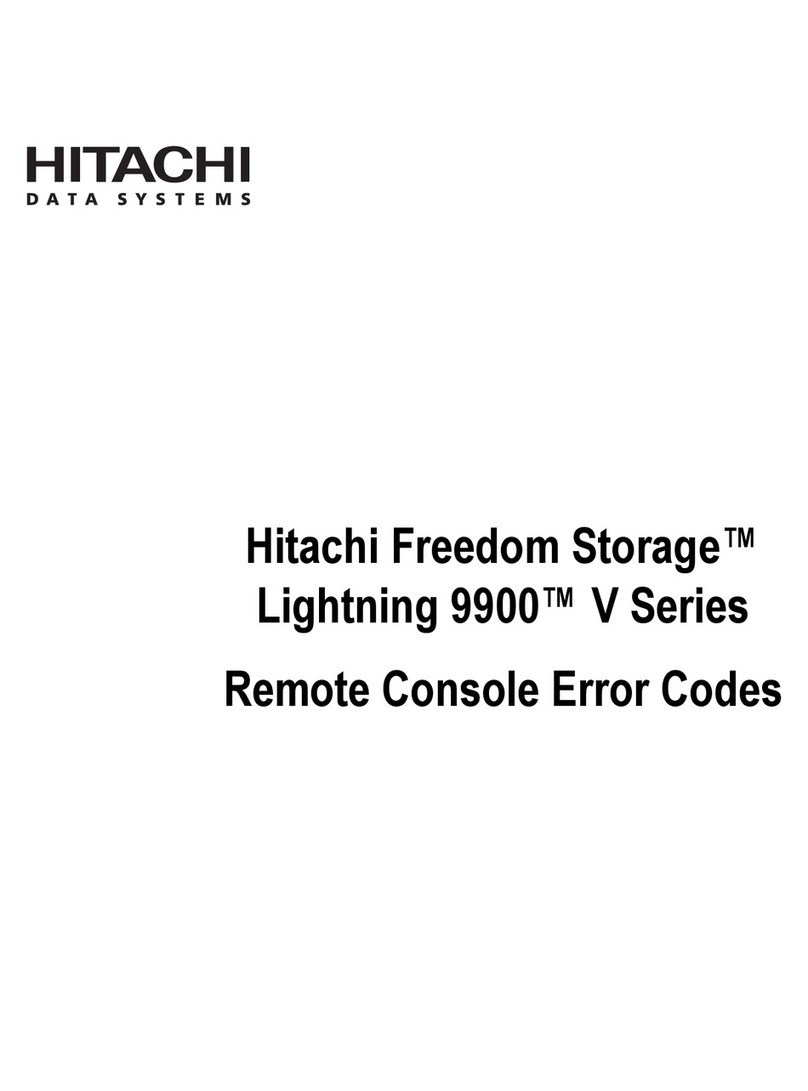
Hitachi
Hitachi Freedom Storage Lightning 9900 V series Error code list
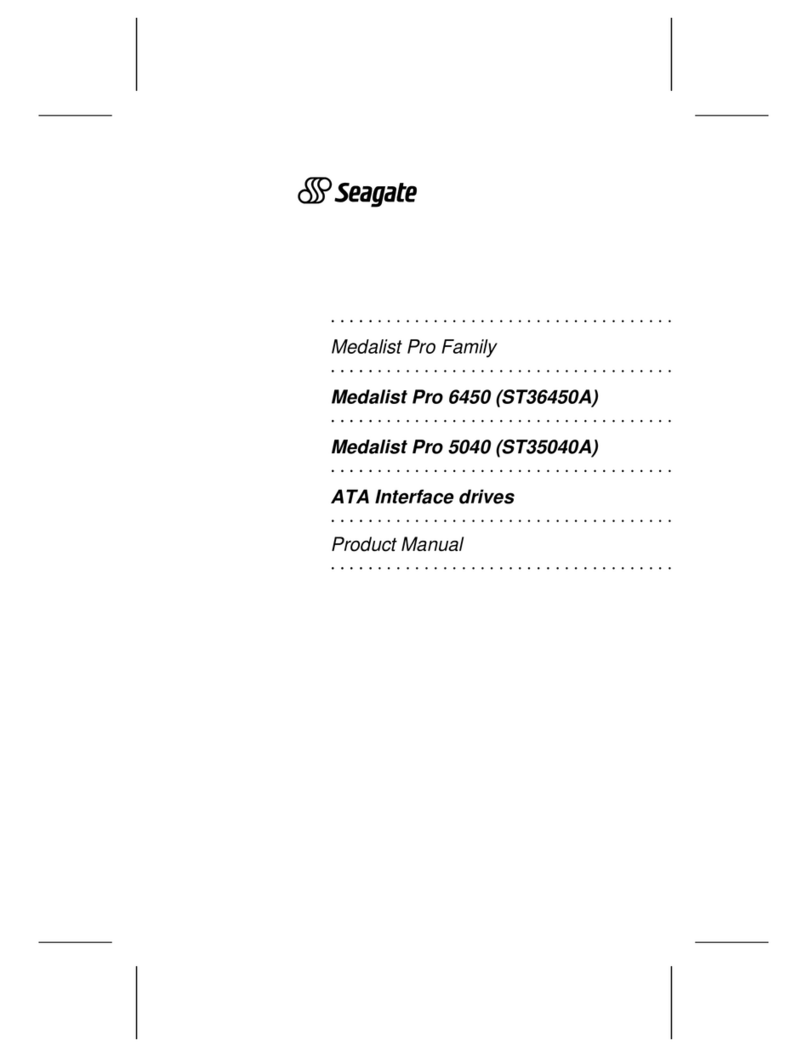
Seagate
Seagate Medalist Pro Family product manual
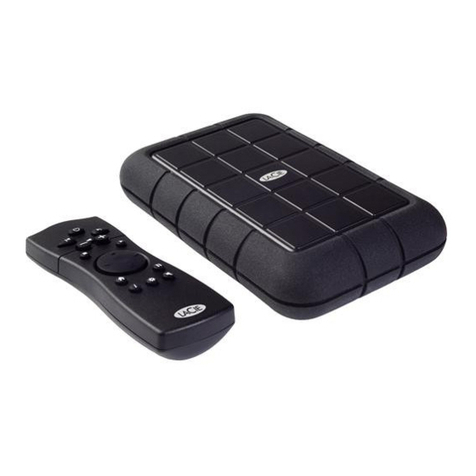
LaCie
LaCie 301460KUA - 320GB USB 2.0 LaCinema Rugged Multimedia Hard... user manual

Integra
Integra HDR-1 instruction manual
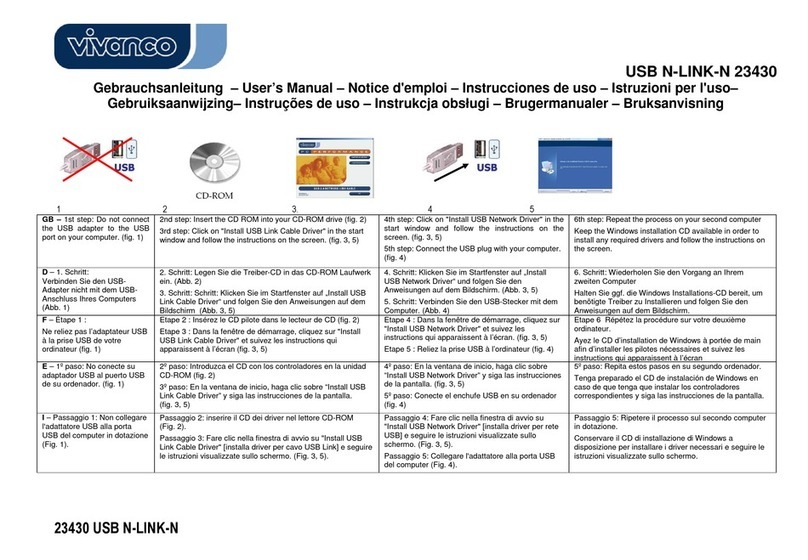
Vivanco
Vivanco N 23430 user manual
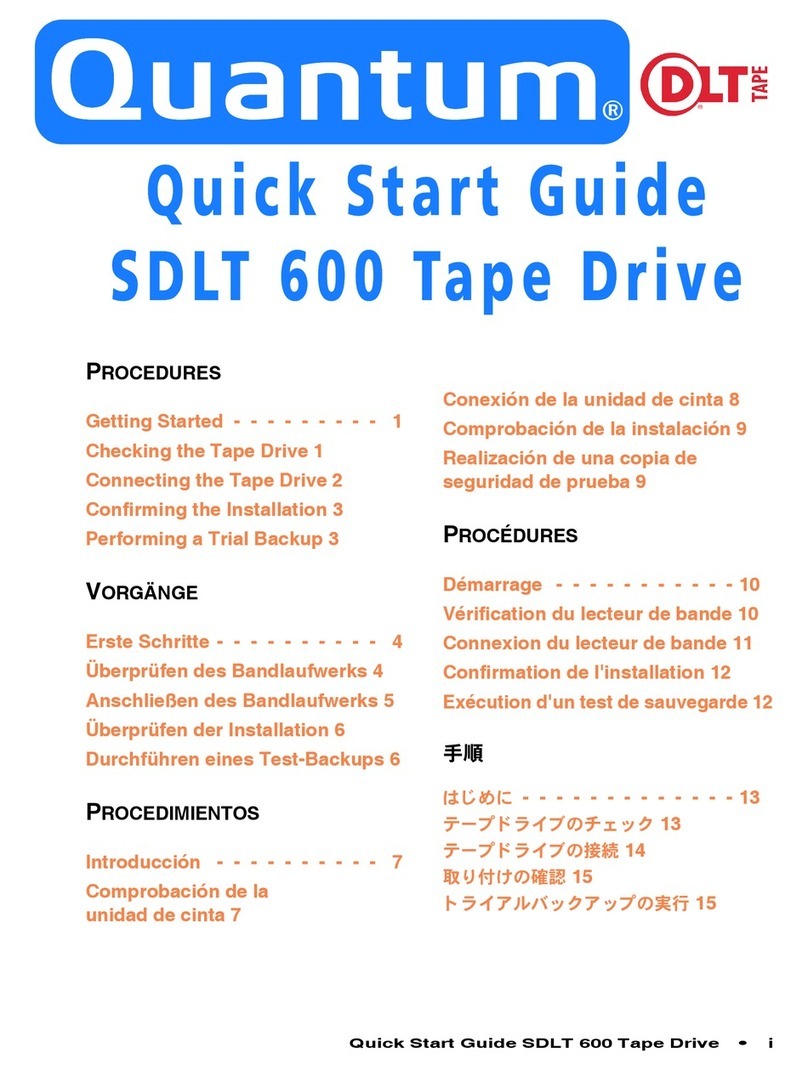
Quantum
Quantum DLTtape SDLT 600 quick start guide
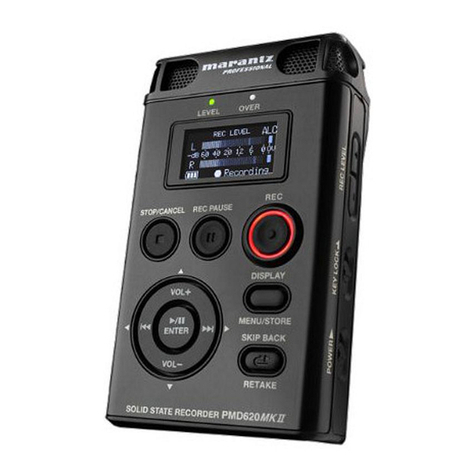
Marantz
Marantz PMD620 user guide
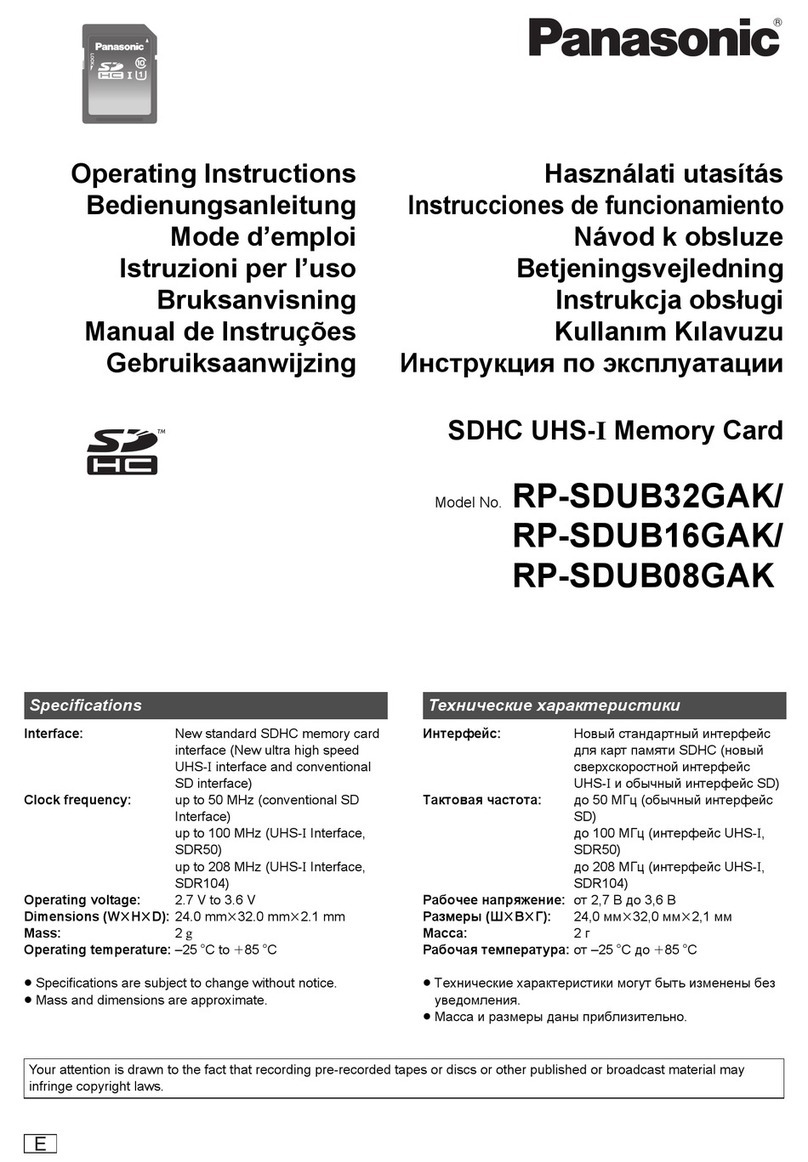
Panasonic
Panasonic RP-SDUB08GAK operating instructions
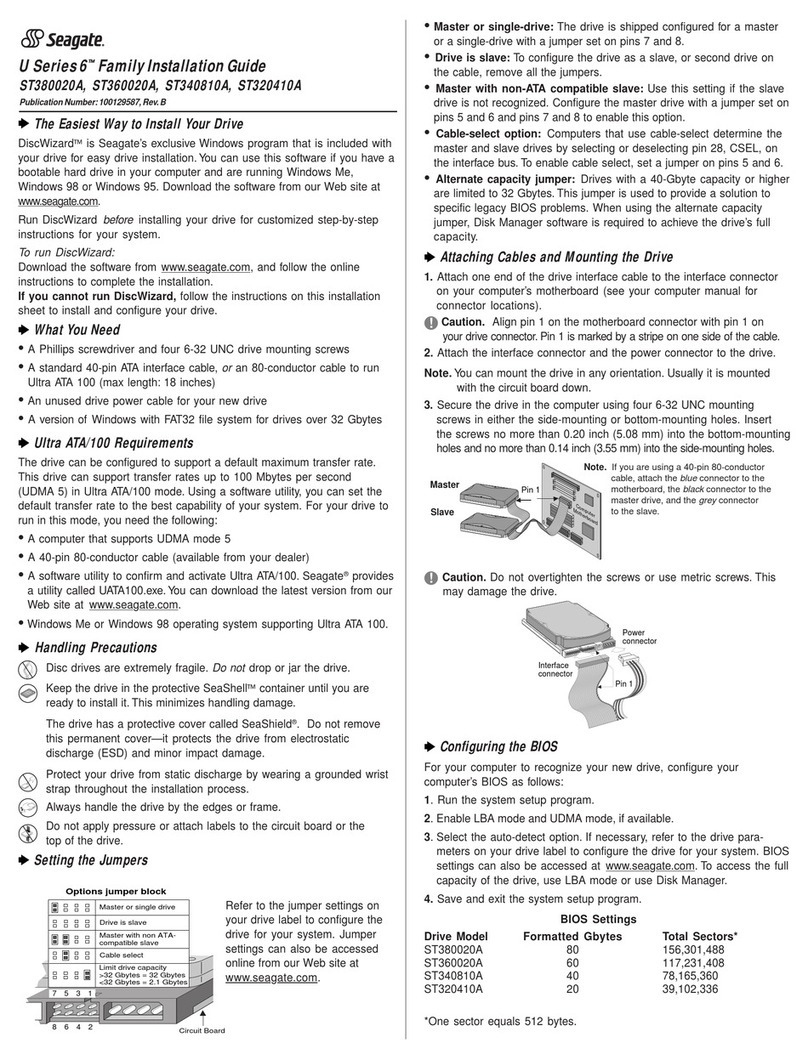
Seagate
Seagate ST380020A installation guide

Stardom
Stardom SR2-B31 Quick setup guide

Western Digital
Western Digital WD1200B05RNN - 120 GB External Hard Drive user manual
